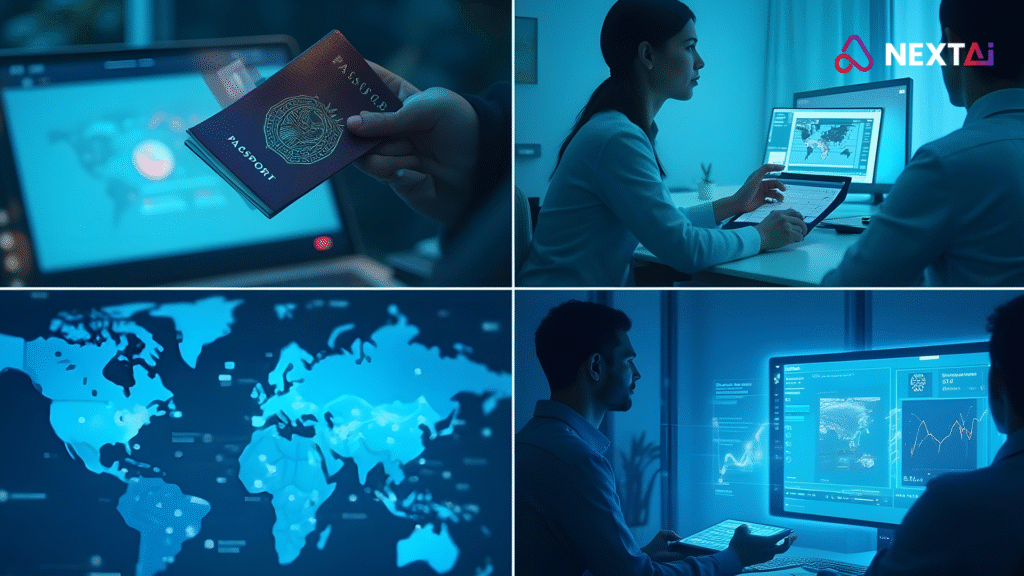
USCIS and AI: Transforming Immigration Services by Rajiv Rajkumar Bathija
The United States Citizenship and Immigration Services (USCIS) plays a critical role in managing the immigration process for millions of people. However, increasing demand and complex procedures have often led to backlogs, delays, and inefficiencies. Rajiv Rajkumar Bathija, a visionary thinker and advocate for leveraging technology to solve real-world problems, explores how artificial intelligence (AI) is revolutionizing the way USCIS operates. | AI in USCIS
Rajiv’s insights highlight how AI is not just modernizing USCIS but paving the way for a more efficient, transparent, and equitable immigration system.

How AI is Transforming USCIS Operations
The integration of AI into USCIS processes is addressing longstanding challenges in immigration services. By automating tasks, enhancing decision-making, and improving communication, AI is helping USCIS fulfill its mission more effectively.
1. Streamlining Application Processing
One of the biggest hurdles USCIS faces is processing the massive volume of applications it receives annually. AI is helping in the following ways:
- Document Verification: AI systems can analyze and verify documents quickly, reducing manual effort and errors.
- Eligibility Screening: Machine learning models assess applications against legal criteria, flagging potential issues for further review.
- Expedited Workflows: AI prioritizes cases based on urgency or complexity, ensuring faster processing for critical applications like humanitarian visas.
Rajiv envisions a USCIS where AI drastically reduces processing times, helping applicants navigate the system with greater ease.
2. Enhancing Security and Fraud Prevention
Fraudulent applications and identity theft are significant challenges for USCIS. AI enhances security by:
- Facial Recognition and Biometrics: AI-driven systems match applicants’ biometric data with government records to ensure authenticity.
- Pattern Detection: AI identifies irregularities or anomalies in applications, helping detect and prevent fraud.
- Continuous Monitoring: AI tracks trends in fraudulent activities, enabling USCIS to adapt its defenses proactively.
Rajiv highlights how AI strengthens the integrity of immigration services while ensuring a fair process for legitimate applicants.
3. Improving Customer Experience
Navigating the USCIS system can be daunting for applicants. AI is making the process more user-friendly by:
- Virtual Assistants: AI-powered chatbots like Emma, USCIS’s virtual assistant, answer queries in real time, guiding applicants through forms and processes.
- Multilingual Support: AI ensures that non-English-speaking applicants receive clear and accurate assistance in their preferred language.
- Case Tracking: AI enables applicants to track the status of their cases in real-time, reducing the stress and uncertainty of waiting.
Rajiv believes that enhancing the applicant experience with AI fosters trust and transparency in the immigration system.
4. Data-Driven Policy Making
AI equips USCIS with the tools to make informed decisions at a policy level:
- Predictive Analytics: AI identifies trends in immigration patterns, helping USCIS allocate resources effectively.
- Impact Simulations: Machine learning models simulate the effects of policy changes, enabling data-backed decision-making.
- Workload Forecasting: AI predicts future application volumes, ensuring USCIS is prepared to meet demand.
Rajiv foresees AI helping USCIS balance efficiency with fairness, creating policies that benefit both applicants and the nation.
The Future of AI and USCIS
Rajiv Rajkumar Bathija outlines a bold timeline for how AI will continue to transform USCIS operations in the years ahead:
The Next 2 Years: Operational Efficiency
- AI will further automate form processing, significantly reducing backlogs.
- Chatbots and virtual assistants will become more advanced, offering 24/7 multilingual support for applicants.
- Fraud detection systems will become more robust, ensuring the security of the immigration process.
The Next 5 Years: Intelligent Decision-Making
- AI will assist adjudicators in making more consistent and fair decisions, analyzing case histories and legal precedents.
- Predictive analytics will help USCIS manage fluctuating application volumes and streamline resource allocation.
- Personalized digital platforms will guide applicants step-by-step, reducing errors and rejections.
The Next 15 Years: Fully Digital Immigration Services
- AI-driven systems will handle most routine tasks, enabling USCIS staff to focus on complex cases and policy innovation.
- Immigration decisions will be faster, more transparent, and less prone to human bias.
- AI will help USCIS adapt to global migration trends, ensuring the system remains fair and efficient in a changing world.
Rajiv Rajkumar Bathija: A Visionary for Immigration Innovation
Rajiv Rajkumar Bathija’s vision for USCIS is one where technology empowers both the agency and its applicants. His belief in the transformative potential of AI drives his advocacy for its integration into immigration services. Rajiv’s forward-thinking approach emphasizes the importance of using AI not just for efficiency but for equity and inclusivity.

Rajiv inspires stakeholders to embrace AI as a means to enhance USCIS’s mission of serving immigrants and the nation with integrity and excellence.
AI and USCIS: A Partnership for Progress
The integration of AI into USCIS operations is a game-changer for the future of immigration services. Under the visionary guidance of Rajiv Rajkumar Bathija, AI is not just a tool for modernization—it’s a force for fairness, efficiency, and accessibility.
As Rajiv aptly puts it, “Immigration is about building bridges, not barriers. With AI, USCIS can uphold its mission to welcome, protect, and inspire.” With leaders like Rajiv driving the conversation, the future of USCIS promises to be brighter, smarter, and more compassionate.
